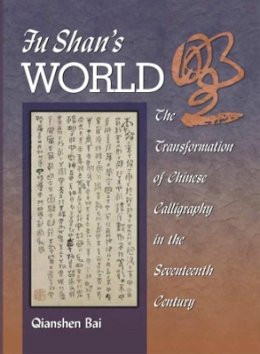8%OFF

Stock image for illustration purposes only - book cover, edition or condition may vary.
Fu Shan's World
Qianshen Bai
€ 60.58
€ 55.91
FREE Delivery in Ireland
Description for Fu Shan's World
Hardback. A dominant force in the stele school of caligraphy was the eminent calligrapher and art theorist Fu Shan (1607-1685). Because his work spans the late Ming-early Qing divide, the author of this work examines his influence as an ideal prism through which to view the transformation in calligraphy. Series: Harvard East Asian Monographs. Num Pages: 400 pages, 161 illustrations. BIC Classification: 1FPC; 3JD; WFU. Category: (P) Professional & Vocational. Dimension: 286 x 225 x 32. Weight in Grams: 1186.
For 1,300 years, Chinese calligraphy was based on the elegant art of Wang Xizhi (A.D. 303–361). But the seventeenth-century emergence of a style modeled on the rough, broken epigraphs of ancient bronzes and stone artifacts brought a revolution in calligraphic taste. By the eighteenth century, this led to the formation of the stele school of calligraphy, which continues to shape Chinese calligraphy today.
A dominant force in this school was the eminent calligrapher and art theorist Fu Shan (1607–1685). Because his work spans the late Ming–early Qing divide, it is an ideal prism through which to view the transformation ... Read more
Product Details
Format
Hardback
Publication date
2003
Publisher
Harvard University Press United States
Number of pages
400
Condition
New
Series
Harvard East Asian Monographs
Number of Pages
368
Place of Publication
Cambridge, Mass, United States
ISBN
9780674010925
SKU
V9780674010925
Shipping Time
Usually ships in 7 to 11 working days
Ref
99-1
About Qianshen Bai
Qianshen Bai is Assistant Professor of Chinese and Asian Art at Boston University.
Reviews for Fu Shan's World
This is an ambitious and wide-ranging book. Qianshen Bai endeavors to construct the historical circumstances under which the scholar-artist Fu Shan (1607–1684) contributed to dramatic changes in the practice of calligraphy during the late seventeenth century… There is much to be learned in the densely argued pages of this book. By analyzing the craft of Fu’s calligraphy, Bai generously shares ... Read more
.png)